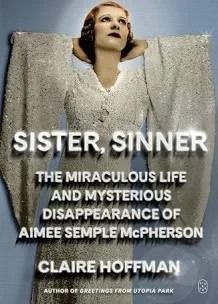5 HOT BOOKS: Exploring Slavery's Legacy, a Journalist Looks Back on His Life, and More
/1. How the Word Is Passed: A Reckoning with the History of Slavery Across America by Clint Smith (Little, Brown)
Smith, a writer for The Atlantic, brings an original and distinctive perspective to the consideration of slavery’s legacy as he draws from his experience as a teacher, journeying through nine sites that, in his portraits of these places and the people who inhabit them, reflect, shape, and grapple with collective memory as it evolves. Beginning with his hometown of New Orleans and its Robert E. Lee statue, traveling on to places as vastly different as Monticello, Angola Prison, and the “House of Slaves” on an island off Senegal, he draws on his powers as a poet to untangle strands of history. In his powerful and moving conclusion, Smith takes his grandparents to the National Museum of African American History and Culture where, he writes, the exhibits were not abstractions of their experience but “affirmations that what they had experienced was not of their imagination and harrowing reminders that the scars of that era had not been self-inflicted,” and what he heard from them was: “This museum is a mirror.”
2. An Especially Good View: Watching History Happen by Peter L. W. Osnos (Platform)
Osnos has not written a memoir so much as a report from the front. Make that many fronts – the great news events of the past half-century, including the civil rights movement, Vietnam, and the Cold War. His upper-middle-class Jewish parents and brother escaped Poland as refugees in 1939, and with them as a 4-month-old, he arrived in the U.S. via India in a basket. A Washington Post journalist and founding book publisher of PublicAffairs, Osnos describes his attitude as “aggressive optimism.” That sensibility infuses his book with an irrepressible energy and enthusiasm tinged with enough self-doubt that one marvels at his seemingly dauntless talent for reinvention. “For reasons I cannot explain,” he writes in his book’s final part, “I have avoided wrinkles.” In junior high school and in Vietnam, he always appeared somewhat starched. With self-reflection absent from so many journalistic accounts, late in life he comes to understand his “emotional deflection” and the fact that “every life has its wrinkles, of the kind that can’t be addressed by having them pressed.”
3. Mercury Rising: John Glenn, John Kennedy, and the New Battleground of the Cold War by Jeff Shesol (W. W. Norton)
After backing up Alan Shepard and Gus Grissom, Glenn was selected as astronaut for Friendship 7 to become the first astronaut to orbit Earth in 1962. Shesol time-travels back more than half a century and vividly captures the drama of the space race. He entwines Glenn’s life story, as an Ohio Boy Scout who enlisted in the military to fight fascism as a fighter pilot, with the rise of the new space agency. Shesol evokes this time of American idealism as it ran into the Soviet Union’s early dominance in space and threat on Earth. In 1998, 36 years after that first orbit, the 77-year-old Glenn became the oldest human in space.
4. House of Sticks by Ly Tran (Scribner)
Resettled from a small Vietnamese town on the Mekong River, with its rice paddies and mango trees, into an unheated railroad apartment in Queens during a blizzard, Tran evokes the anguish of relocation with her stoic Buddhist family, including her father, traumatized by his time as a POW. Tran’s memoir powerfully depicts her family’s hardships as they scraped by with sweatshop work, then their nail salon. Socially observant, psychologically self-aware, and academically talented, Tran is brave and resilient but also plagued with self-doubt and depression. For half her life, she was limited by her visual impairment, finally getting eyeglasses when her father relented in his objections.
5. Revival Season by Monica West (Simon & Schuster)
In her absorbing debut novel, West explores family dynamics, power, and faith through the Black evangelical church as a domineering pastor and his family travel through the South on the circuit to save bodies and souls. The story is sensitively and artfully narrated by 15-year-old daughter Miriam, who contends with her combustible father, damaged mother, a brother enthusiastically following their father, and a younger sister with cerebral palsy who raises questions about the patriarch’s healing powers. West’s compelling drama renders this evangelical world in all its complexity.










